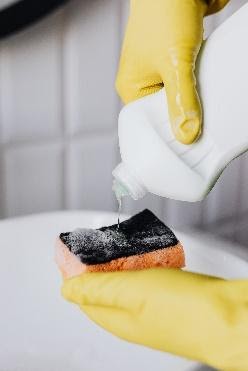


Germs are microscopic bacteria, viruses, and fungi that potentially cause disease.
In 2011, NSF International conducted a study: 2011 NSF International Household Germ Study where 30 common items in the home of 22 volunteer families were swabbed. The study found that the most germ-infested room in the home was the kitchen. The swab analysis found coliform bacteria including: Salmonella and E.Coli. (1)
The U.S. Center for Disease Control and Prevention (CDC) estimates that Salmonella causes about 1.35 million infections and 420 deaths in the United States every year. The common symptoms are diarrhea, fever, and stomach cramps.(2)
E.Coli are bacteria that can cause diarrhea. E. Coli bacteria are found in the environment, food, and intestines of animals and people. The findings in the report show that the kitchen contains the most germ-infested items in your home(3):



The report outlined volunteers’ perception versus reality on the most germ-infested items in the household.
Volunteer perception
Actual
A surface may seem clean, but that does not mean that it is without germs. We cannot see these harmful germs on our surfaces, but they do exist. There is a risk of getting sick by touching these contaminated surfaces and then touching your mouth, nose, or eyes. It is crucial to keep surfaces free from germs to prevent the spread of infectious diseases.
In addition, it is essential when using disinfecting or sanitizing products to always read the instructions indicated on the label for proper use to avoid any risk to the health of you or your family.
(1) Microsoft Word – 2011_NSF_Household_Germ_Study_exec-summary_012820 (d2evkimvhatqav.cloudfront.net)
(3) E. coli (Escherichia coli) | E. coli | CDC